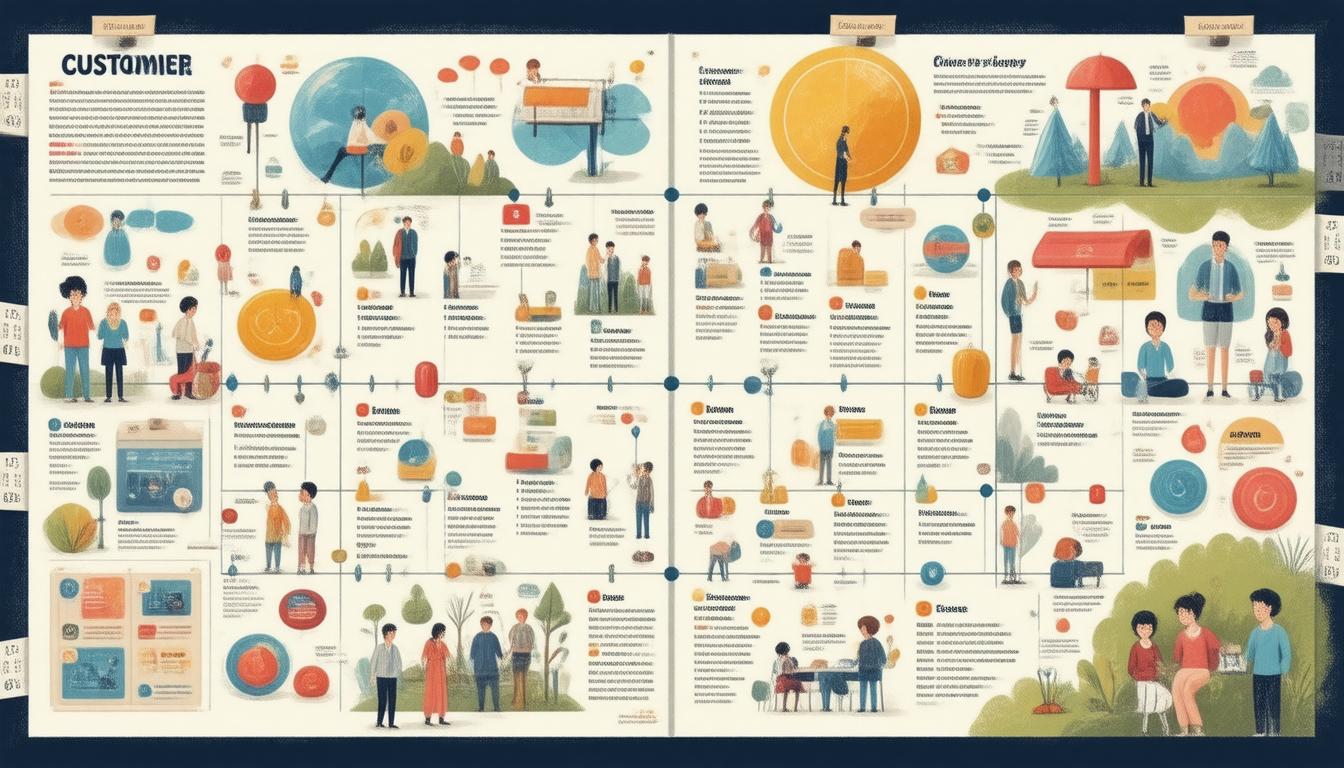Understanding the customer journey is paramount for any business aiming to enhance user experience and drive customer loyalty. Customer journey mapping is a strategic approach that visualizes the entire process a customer goes through when interacting with a brand, product, or service. This guide delves into customer journey mapping, exploring its benefits, how to create an effective map, and the critical elements that make it successful.
What is Customer Journey Mapping?
Customer journey mapping is a visual representation of the interactions and experiences a customer has with a company over a period. It encompasses every touchpoint, from initial awareness through to post-purchase interactions, allowing organizations to see their offerings through the customer’s lens. By charting these journeys, businesses can identify emotional drivers, pain points, and opportunities for refinement within the user experience.
Customer journeys can vary widely across different segments of the audience, necessitating that businesses create multiple journey maps tailored to specific customer personas.
Why is Customer Journey Mapping Important?
-
Enhanced Customer Understanding: Journey maps enable organizations to step into their customers’ shoes. This shift in perspective fosters empathy and helps businesses identify customer needs, expectations, and frustration points.
-
Identifying Pain Points: By detailing each step in the customer journey, businesses can pinpoint where customers encounter issues or disconnects in their experiences, allowing for targeted interventions.
-
Strategic Decision-Making: Insights gained from customer journey maps inform better marketing strategies, product development, and customer service initiatives. This data-driven approach ensures that resources are allocated effectively.
-
Increased Customer Retention: Understanding the full customer journey and making improvements at critical touchpoints can significantly enhance satisfaction and loyalty, ultimately leading to higher retention rates.
-
Alignment Across Departments: Journey maps serve as a communication tool across various teams. They help align goals and initiatives to put the customer at the center of the company’s strategy.
Creating an Effective Customer Journey Map
Creating a customer journey map involves several key steps:
1. Define the Scope and Customer Persona
Begin by identifying a specific customer persona and a particular scenario. This focus ensures that the map addresses the most relevant experiences without becoming too broad. Gather data from customer interviews and feedback to inform your persona effectively.
2. Lay Out the Customer’s Journey Stages
Divide the journey into distinct stages that describe the phases a customer goes through, from awareness to decision-making. This framework helps clarify where improvements may be necessary.
3. Identify Touchpoints
Map out all possible interactions a customer may have with your brand at each stage, both on-stage (direct interactions) and off-stage (behind-the-scenes processes the customer may not see). This includes social media engagement, website interactions, and customer service calls.
4. Understand Customer Actions and Emotions
For each touchpoint, detail what actions the customer is taking, their feelings, and their thoughts. Understanding emotional highs and lows throughout the journey can highlight areas where the experience could be optimized.
5. Gather Feedback and Data
Utilize surveys, interviews, and analytic tools to gather insights about customer perceptions and experiences. This input is invaluable for fine-tuning the journey map and ensuring its relevance.
6. Iterate and Update
Customer journeys are not static. Regularly revisit and update your map as you collect new data and as customer expectations evolve. This iterative process ensures that your map remains a relevant strategic tool.
Conclusion
Customer journey mapping is a powerful exercise that equips businesses with the insights needed to refine their customer experience continually. By understanding the intricate details of the customer journey—what customers are feeling, thinking, and doing—organizations can craft strategies that not only meet but exceed customer expectations. In turn, this may lead to increased satisfaction, loyalty, and ultimately, long-term business success.
Embarking on the customer journey mapping process requires dedication to understanding customers deeply, but the rewards in terms of enhanced user experiences and strengthened customer relationships make it worth the effort. Embrace this strategic tool, and watch your business navigate its way to success.
Do you want to take your career to the next step? Improve your earning potential? Grow your business? Let us show you what A.I. can do for you. Contact us today at [color=rgb(4, 53, 157)]office@fairbane.com.au[/color]. We serve every corner of the earth.


